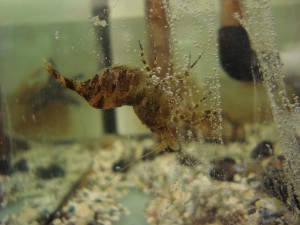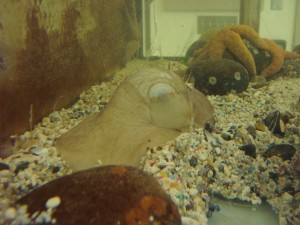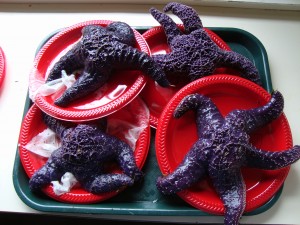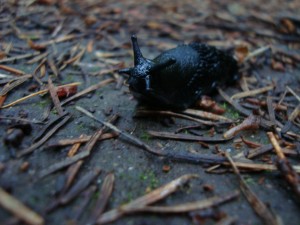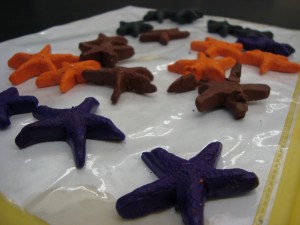Welcome to my blog! Here I will be sharing my experiences as an intern in Washington, DC, where I will be participating in a summer internship program with the National Council on U.S.-Arab Relations. NCUSAR
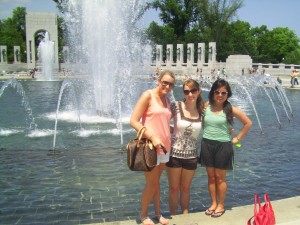
2 of my roommates and I at the WWII Memorial on Memorial Day
is a non-profit in DC that works with other organizations to spread knowledge and awareness about the Arab/Islamic world in the United States and to facilitate cooperation and understanding between the two regions. As an intern with the NCUSAR this summer, I will be one of 25 students participating in a program that includes seminar classes on the Arab world with expert guest speakers, site visits to embassies and government buildings, and work placements with the Council’s partners throughout the city. I have been assigned to work at Georgetown University’s Center for Contemporary Arab Studies; others will be working with the media, lobbying groups, and other non-profits. I like that we will all have different experiences to share and learn from and a chance to expand our network of professional contacts. Even though I have had limited interaction with the other interns so far (since we just met yesterday, except for my roommate Karina), I am excited about being part of this group. Quite a few of the students have their roots in the Arab world, coming from Lebanon, Egypt, Saudi Arabia, Bahrain, Morocco, Iraq, and Kuwait to study in the U.S. Every aspect of this program promises to teach me a lot and to expand my horizons, so I am very excited to have gotten this opportunity.
Here are the highlights of my first few weeks in DC. I’ll put the topics in bold so you can pick and choose what to read…there’s a lot to cover already! :
I turned 21! And have since been enjoying the nightlife DC has to offer and socializing with other interns and young staffers in the area. The people in my program are great, my roommates are a lot of fun, and it really easy to meet new people. Your odds are pretty good that if you start talking to a college-aged person walking around DC in the summer, they’ll turn out to be an intern too. So you immediately have something to talk about and most people are out-of-towners looking for new people to hang out with while they’re here. So ya, the social life is going great!
I have seen a fair amount of the monuments and landmarks of DC that I had previously only seen in pictures, movies, and the news. Considering that I have wanted to study politics since I was about 10 years old and had never been to DC until now, I am pretty excited about all the important buildings and such. I got a few amused looks from locals when I had a friend take my picture next to the very plain, but to me very awesome and exciting, State Department sign outside the building. It was cool though to spend Memorial Day this year actually VISITING all the memorials—my roommates and I made it to most of them around the National Mall (see pic at WWII memorial), which is only a 5-10 minute walk from where we are living at the George Washington university campus. On my birthday I also ended up trapped in the Lincoln Memorial with about 200 other people during a freak downpour that no one saw coming. Luckily it was done after about 20 minutes. I have since discovered that those happen about every 3 days at this time of year in DC, so I now carry an umbrella regularly—even when it is sunny outside. As a life-long Seattlite, I am slightly ashamed. But the weather here seems even more schizophrenic than home. Oh, and people here use umbrellas even when it is less-than-drizzling. It amuses me greatly.
I have begun work over at Georgetown University and am doing some investigation of grad school possibilities at the same time. My work assignment for my internship is in Georgetown’s Center for Contemporary Arab Studies. I like my office and coworkers, and I have been looking at Georgetown as one of my top choices for grad school for quite some time so it is cool to be there meeting grad students and professors and getting to know the school better. My actual work involves helping the center with various events and programming, mostly office work and not super exciting yet so I will move on to other things.
As part of my internship program I have had lectures by the following speakers:
Dr. John Duke Anthony, founder and president of NCUSAR and adjunct professor at Georgetown, among other things. He has tons of experience in the Middle East and in working with policymakers, so I definitely enjoy his talks.
A member of the American Task Force on Palestine spoke to us about the Israel/Palestine issue. He provided a lot of interesting information about the issue and America’s changing relationship with that particular conflict. He says it has become a strategic imperative to the US to see the issue resolved, whereas it has previously been seen by administrators as something that would be nice but wasn’t necessary. Definitely relevant considering the recent flotilla incident.
2 retired CIA operatives speaking off the record about their time in the Middle East, including one who is the President of the Middle East Policy Council and the other has written several books and been a consultant on movies concerning the CIA and the region, like Charlie Wilson’s War. One thing I liked about this presentation was that it gave some insight into a potential career track that I have been interested in. I definitely want to work abroad and am interested in intelligence work as well, so hearing from people who spent most of their career in the CIA was a great experience.
The president of ANERA (American Near East Refugee Aid), the organization responsible for providing humanitarian relief and assistance from the US primarily to Palestinians. It was simultaneously inspiring and depressing to hear about the work they do—they have helped bring aid to thousands of people, including feeding 20,000 malnourished Palestinian children PER DAY, but the sad thing is any long-term development projects they’d like to do are undermined by Israeli policies—especially the blockade of Gaza which prevents any building materials and thousands of food items from getting to the people of Gaza. Also interesting—this organization is associated with the US government and receives funding from our govt on their efforts. To do this, they go through a lot of oversight to ensure none of their partners are in any way affiliated with Hamas and other organizations on the US blacklist. But the ironic thing is that the US is sending money to help development in Gaza, while at the same time sending bombs and weapons to Israel to use against Gaza. Behold the madness that is politics sometimes. Anyway, that’s some food for thought.
Also as part of my program I have visited the following sites and received briefings, tours, etc. from officials and employees:
The Saudi Arabian Embassy—briefing and question/answer period with one of their Foreign Service Officers. We covered a lot of topics and I got a better idea of where Saudi Arabia stands on current issues and within the international political system.
The Supreme Court—briefing, tour, and question/answer period with the Deputy Clerk, a member of the clerk’s office, and the attorney in charge of handling all death penalty cases where execution dates have been set. This was an interesting visit—everyone really enjoyed themselves mostly because the people we met with and ran into throughout the building were super friendly and interesting, and just made the visit a lot of fun. We were led primarily by this lovely woman who had been at the Court for 30 years, and who traveled frequently to the Middle East. She had lots of great stories about the Justices and the region. She has also worked some Guantanamo cases that had been sent to the Supreme Court, so it was interesting to hear her perspective.
The Office of the Director of National Intelligence—briefing, tour, and question/answer period with two Intelligence Analysts in the National Counterterrorism Center. I was especially excited about this visit, since I am seriously considering work as an Intelligence Officer/Analyst in the future. I definitely was not let down. It was fascinating to hear about the kind of work that was done there—in part because the people who spoke with us were very upfront but also reserved in that a lot of the information we would have liked to hear about was classified and they just were not allowed to say anything about certain subjects—namely sources and methods. But still, a lot of good information was shared and I talked to a couple people about fellowship programs there and employment possibilities, so that was awesome. And we got to see the “operations room” which was pretty cool. The show 24 basically copied the set-up and everything, though I don’t watch the show so can’t comment further…Overall though, AWESOME visit and I hope to be back there someday with a security clearance as one of the people who IS allowed to know classified things!
I have also sought out some other networking/educational opportunities (and DC certainly has plenty to offer!) Last week I went to a panel discussion at the World Affairs Council. The topic was U.S.-Iranian relations, an issue that I am particularly interested in especially after taking a course on Iran and Israel last semester from Professor O’Neil in the Politics department at Puget Sound. Turns out one of the speakers was Trita Parsi, a well known scholar in the field whose book (Treacherous Alliance) I read for O’Neil’s class! I got to talk to him at the event’s reception for a bit too! I also mingled with the other experts on the panel—one was a senior editorial writer for the Washington Times, with whom I discussed the future of U.S. and Iranian relations vis-à-vis Israeli actions and policies. The other speaker was an international policy analyst with the RAND Corporation. I talked to him about the research I had done for Professor O’Neil’s class on local governance in Iran and he was very encouraging of my project and gave me some useful insight. I walked away from that night with some interesting perspective, some business cards, and a lot of excitement! This kind of experience is EXACTLY what I came looking for in DC.
So overall things are going great! I love being here in DC and so far I would definitely recommend the NCUSAR summer program to students considering it for next summer. Sorry this was so long, I will try to stay on top of things better in the future! There’s a lot that happens in this program, though, so hopefully you all find it as interesting as I do!
p.s.—I am horrible at taking pictures. I will try to be better so that I can include interesting ones in my posts.

